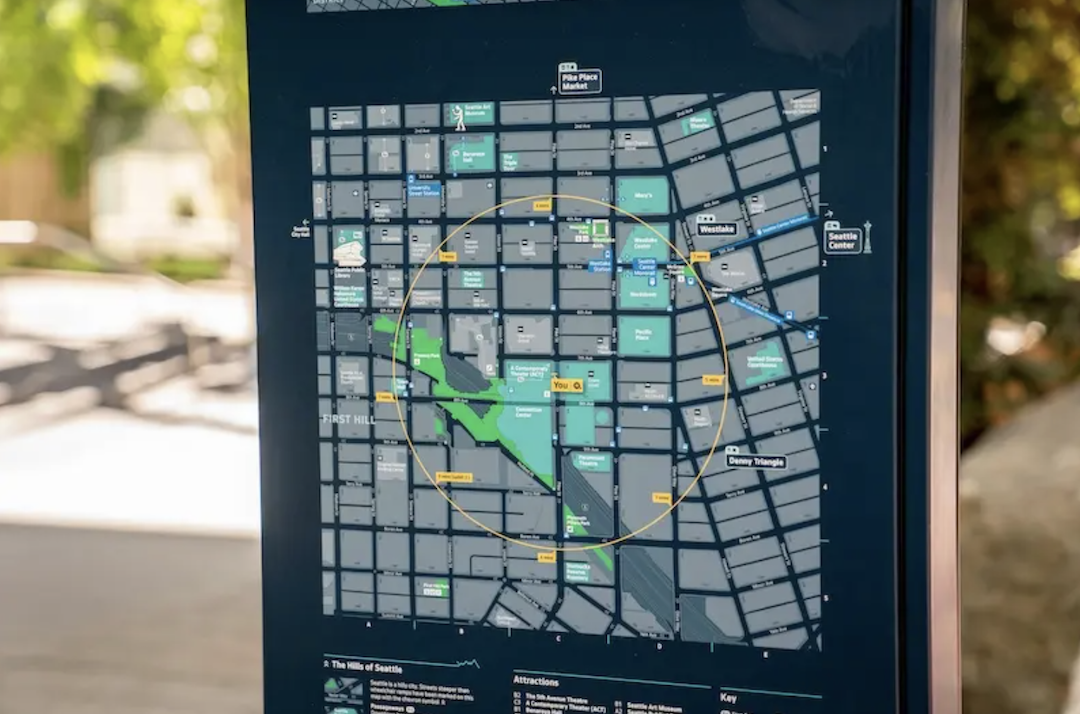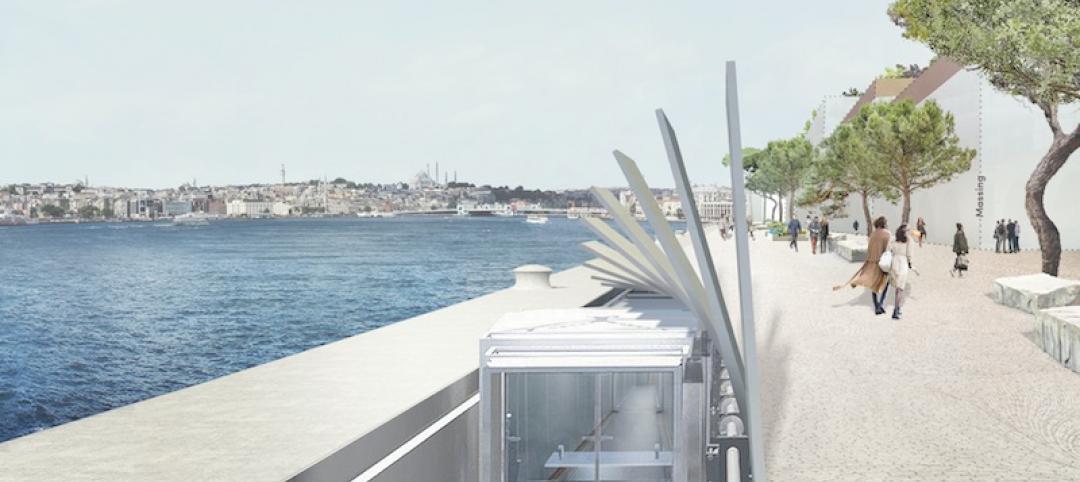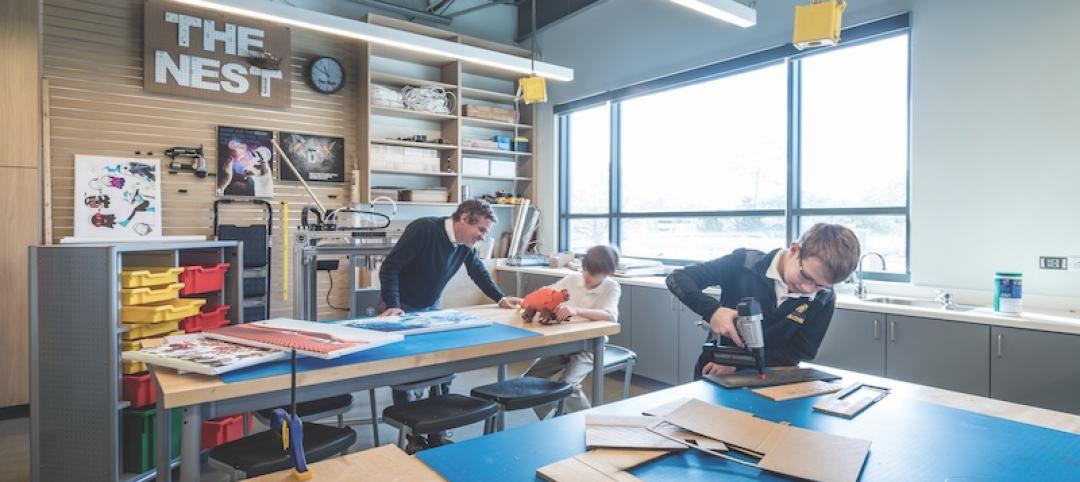The Seattle Department of Transportation (SDOT), in its attempt to make Seattle the most walkable and accessible city in America, has recently appointed Applied Information Group to create a citywide wayfinding system to encourage and enable more walking and rolling.
The system, dubbed Seamless Seattle, is based on the successful Legible London model, which is now lauded as the benchmark for complex city wayfinding. It will make America’s second-fastest growing city more legible and accessible for local residents, commuters, and the more than 40 million visitors that travel to Seattle each year.

Seamless Seattle will feature heads up mapping on street signs to help the user quickly orient themselves in reference to their immediate surroundings. Illustrations, slope information, accessible entrances to transit, and publicly accessible through building Hillclimb assists will all be integrated to meet the needs of the widest range of users. Braille and tactile panels provide orientation information on all signs and non-English languages in specific areas will be integrated as well.
In order to make the system as accessible as possible it will use proper contrast for legibility, optimization for color blindness, large type sizes, a careful balance of content, and simplification of complex topography.

Additionally, Seamless Seattle will adapt its design to respond to historic landmarked areas without reducing the overall legibility. Applied partnered with local businesses Alta Planning + Design and 3 Square Blocks to involve community and business leaders in the planning and design of the information system. Applied also worked closely with the major transit agencies Sound Transit and King County Metro to make sure a system of information for city streets is linked seamlessly to transit services.

“Our way finding project became much more than designing signs and directions,” said Adrian Bell, Applied’s Project Director for Seattle, in a release. “ The input of community leaders, stakeholders, and ambitious city staff encouraged us to create a project that is inclusive and demonstrates that walking, in particular, is the glue that holds the city together.”
Applied’s work with SDOT has so far produced an initial scoping study, a detailed planning strategy and guidelines, full design standards, and plans for two large pilot projects that will be implemented throughout the remainder of 2021.
Related Stories
Great Solutions | Mar 9, 2018
Forget the wall thermostat: Wear one on your wrist instead
The Embr Wave Wristband acts like a personal thermostat and could become a user-friendly component in building energy-saving strategies.
Great Solutions | Feb 8, 2018
Stackable steel modules speed building core construction
With this patented, steel-and-concrete hybrid system, the service core will no longer be the schedule bottleneck on new construction projects.
Great Solutions | Jan 10, 2018
Blue lagoon technology brings the beach anywhere in the world
From coastal resorts to inner cities, these large-scale clear-water lagoons offer a slice of paradise.
Great Solutions | Oct 17, 2017
Loop NYC would reclaim 24 miles of park space from Manhattan’s street grid
A new proposal leverages driverless cars to free up almost all of Manhattan’s Park Avenue and Broadway for pedestrian paths.
Great Solutions | Sep 14, 2017
Hydraulic underground boardwalk and gangway system reunites the public with the coastline in Istanbul
The bespoke system is part of a master plan by Dror and Gensler that creates the world’s first underground cruise operation.
Great Solutions | Aug 14, 2017
Transmogrifying ‘E ink,’ energy-harvesting paint remove the ‘fiction’ from ‘science fiction’
These materials can turn an ordinary wall into dynamic real estate.
Great Solutions | Jul 12, 2017
The writing on the wall: Maker spaces encourage students to take an active role
Maker spaces, dry-erase walls, and flexible furniture highlight Kinkaid’s new Learning Center.
Great Solutions | Jun 6, 2017
Good vibrations: Portable tuned mass damper provides lightweight, cost-effective way to reduce structural vibrations
Developed by a team at Virginia Tech, the PTMD has been shown to reduce vibrations by as much as 75%.
Great Solutions | May 5, 2017
No nails necessary: Framing system comes together with steel zip ties and screws
Clemson University’s School of Architecture develops a patent-pending construction method that is gaining attention for its potential use in rapid, low-tech sustainable housing.
Great Solutions | Apr 6, 2017
Phone booths for the 21st century
Spotting a phone booth on a public street may not become any less rare, but they may soon become fixtures in the modern office.

















